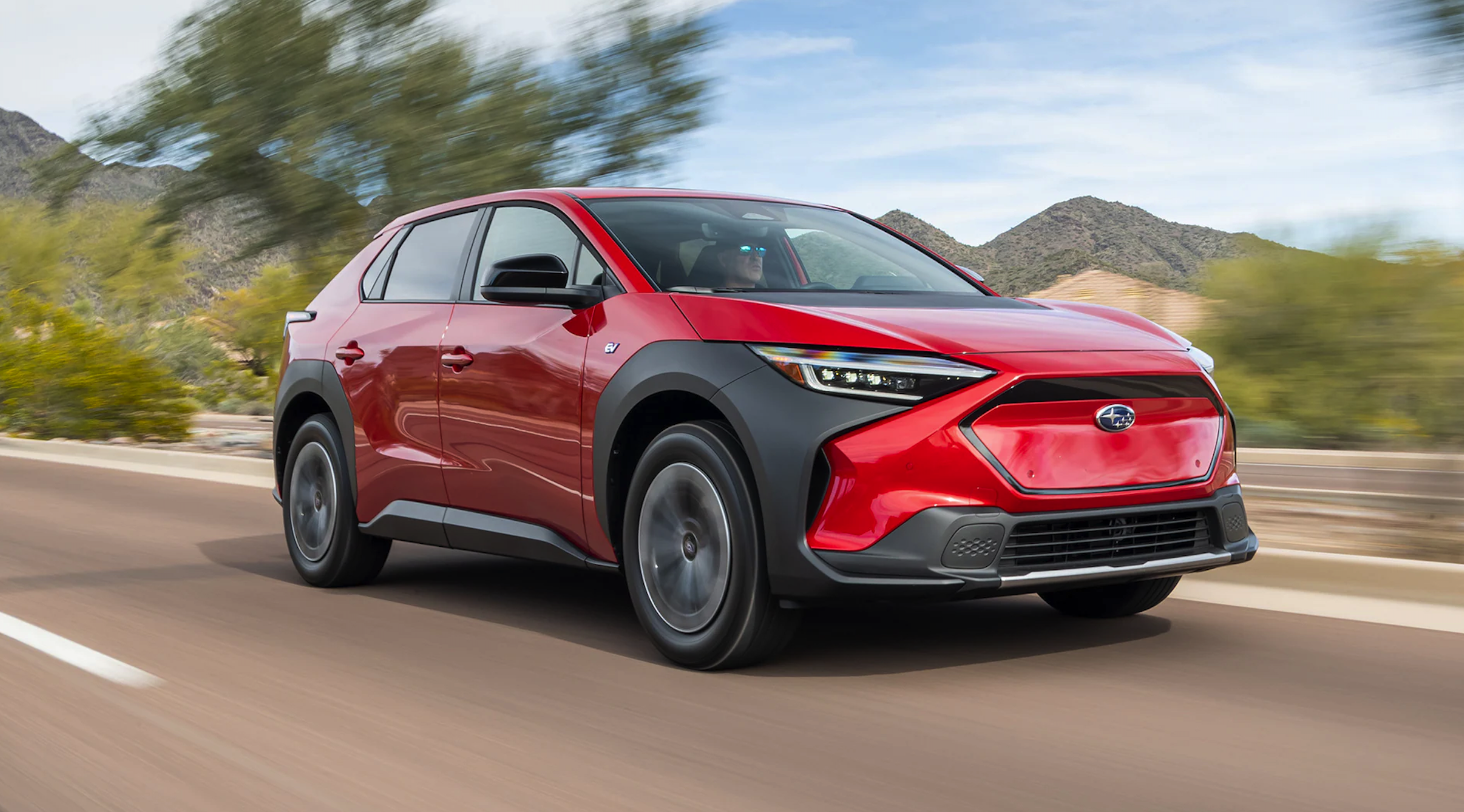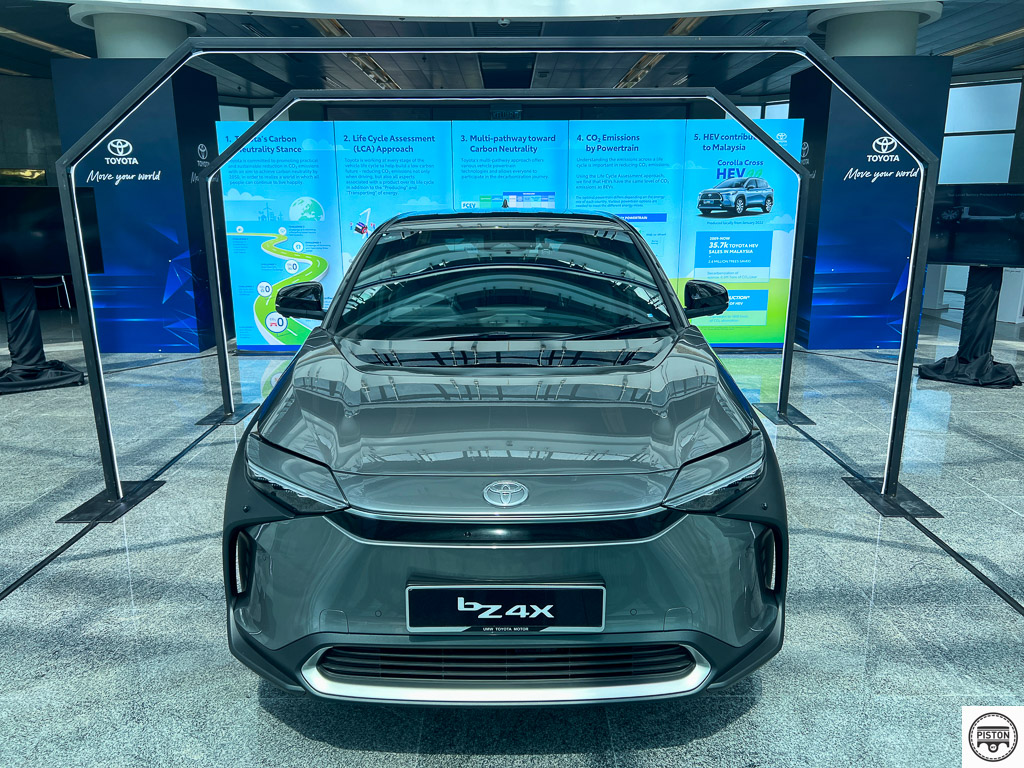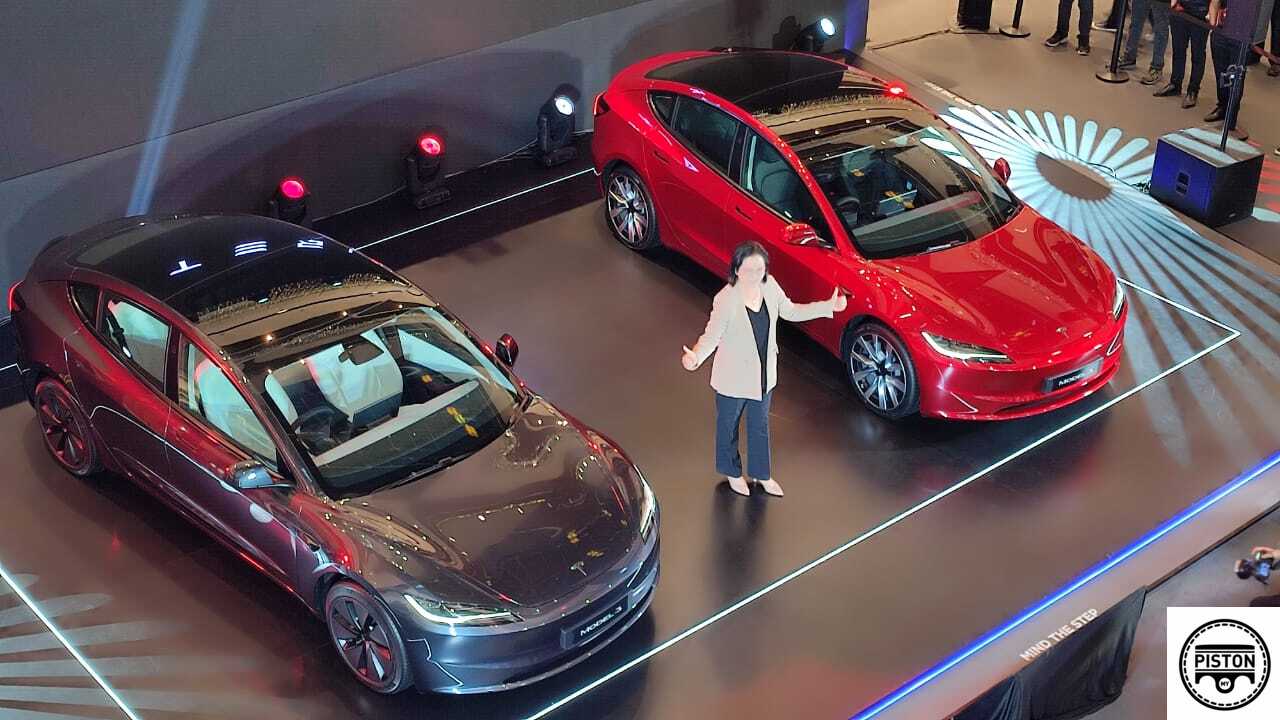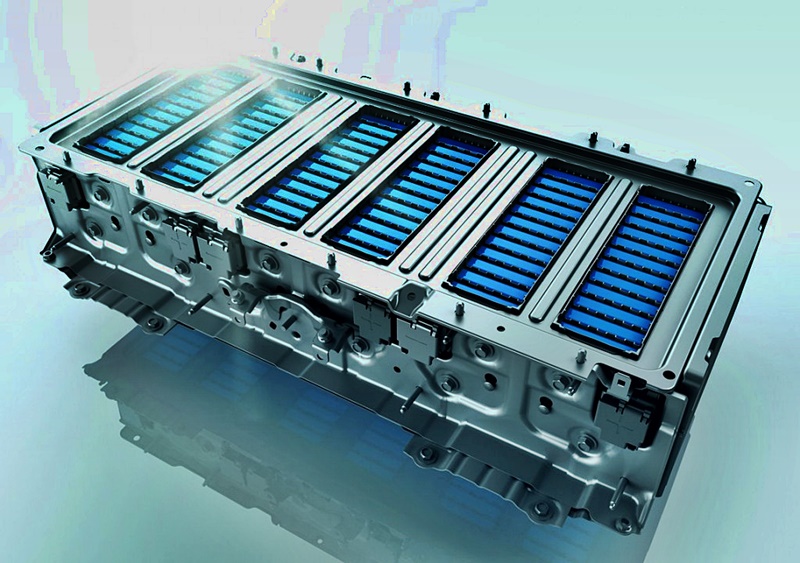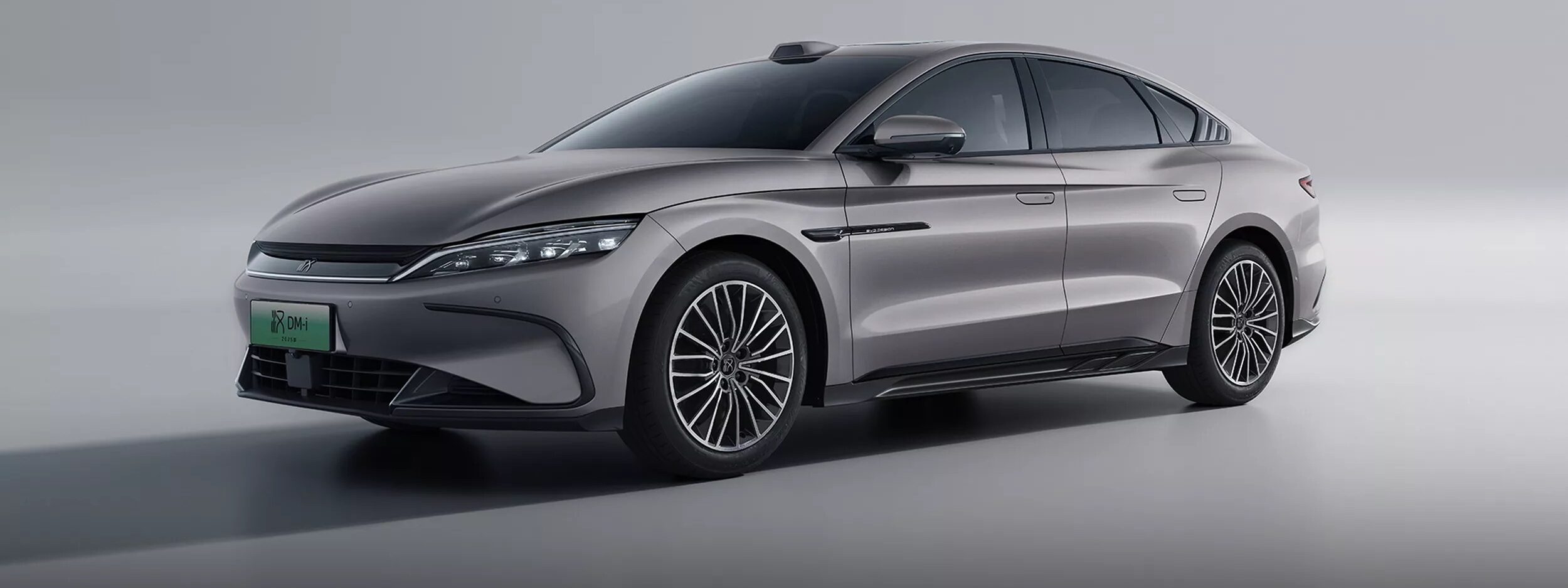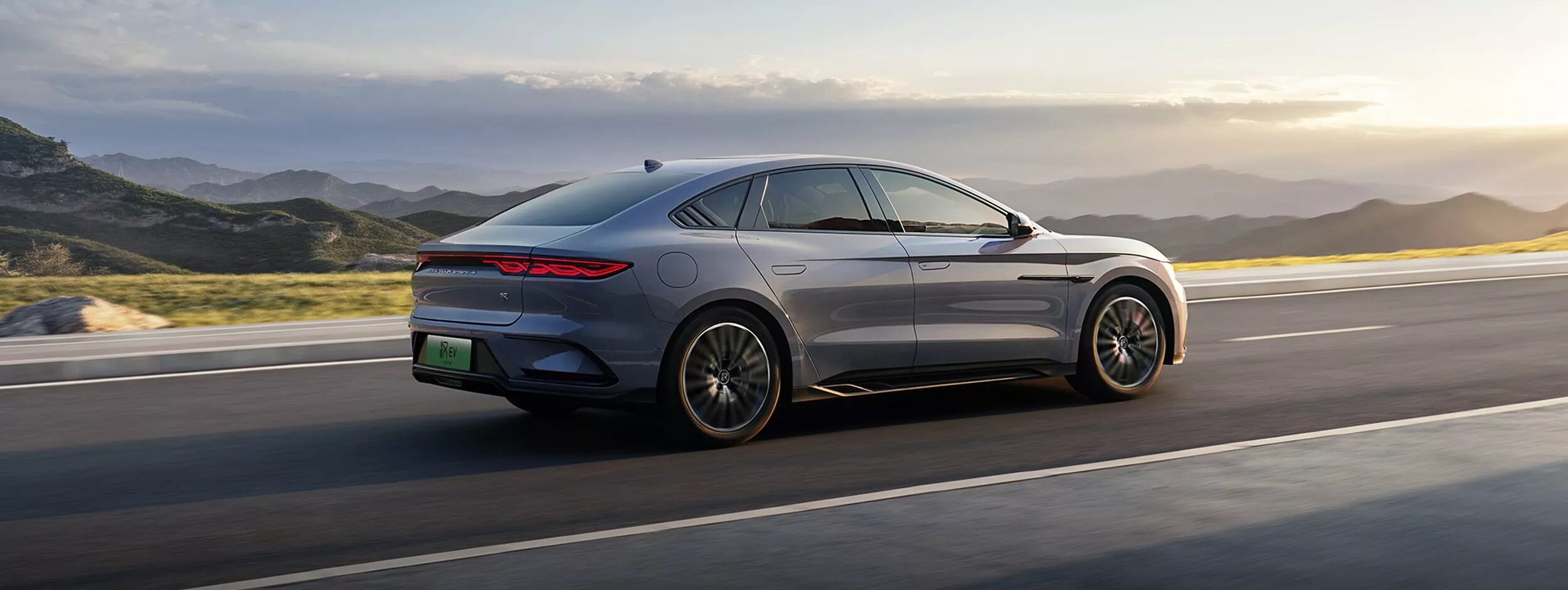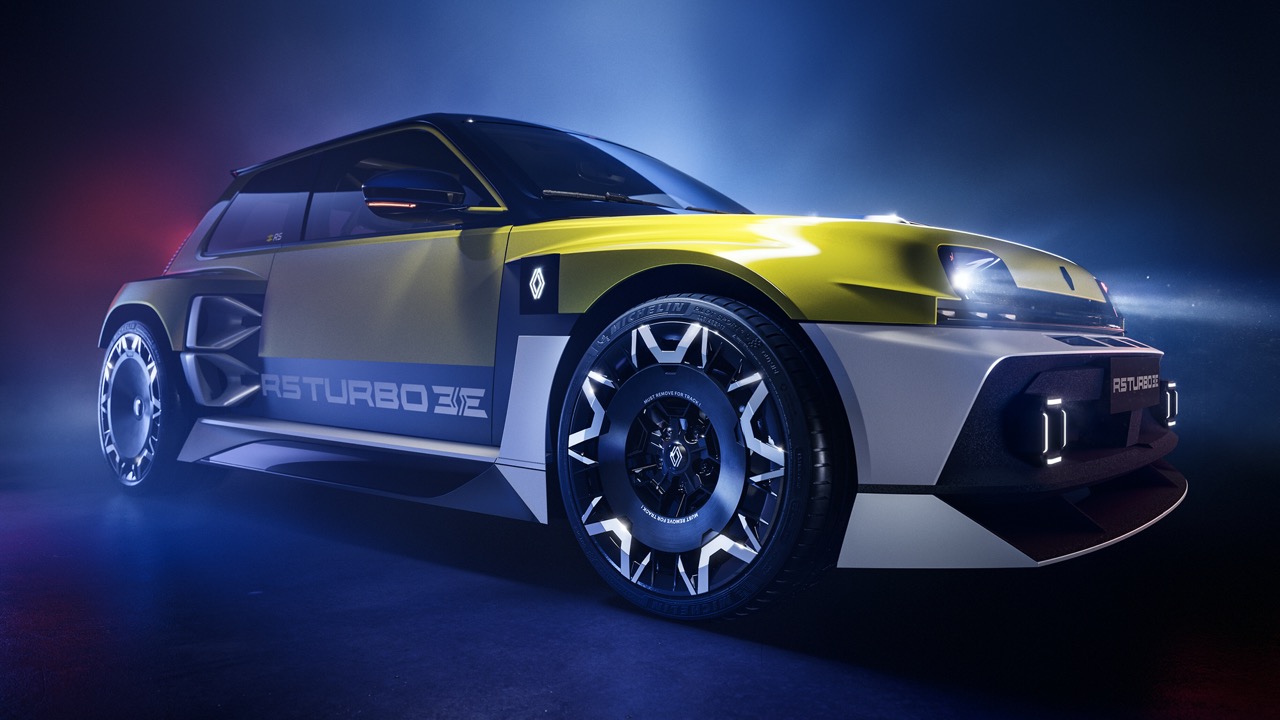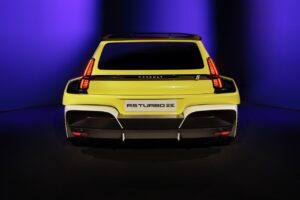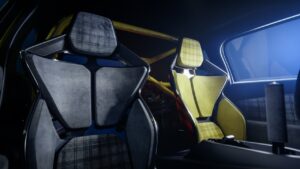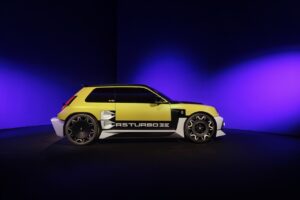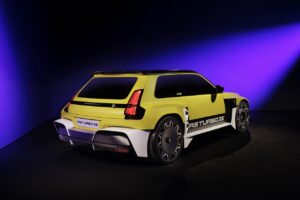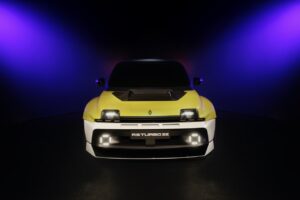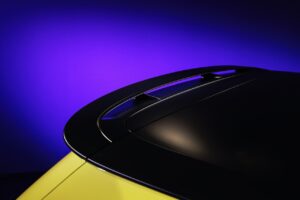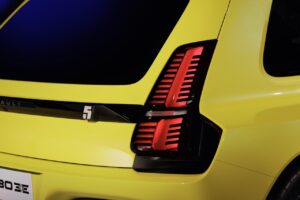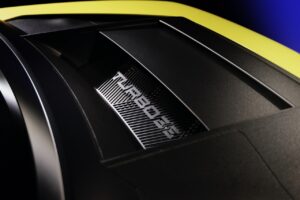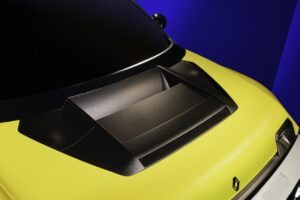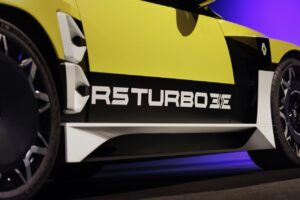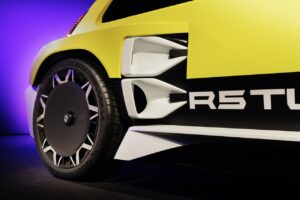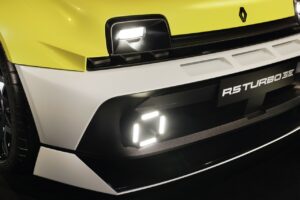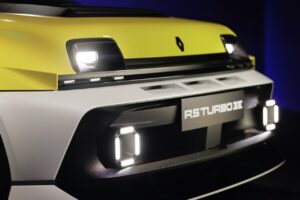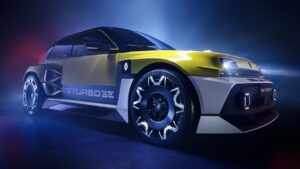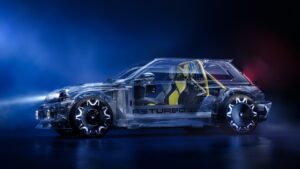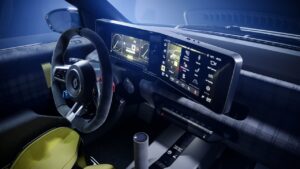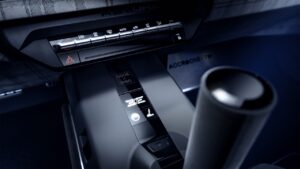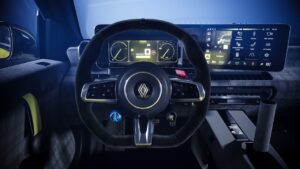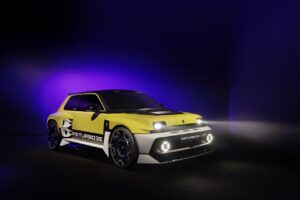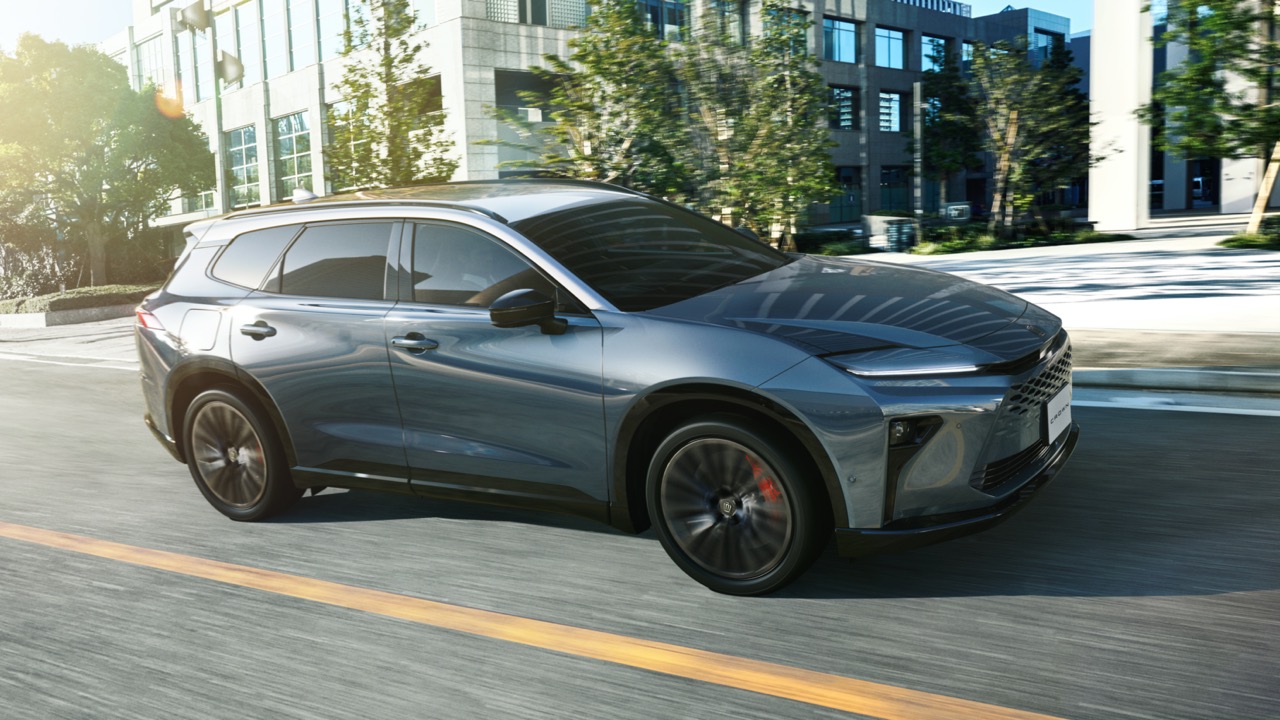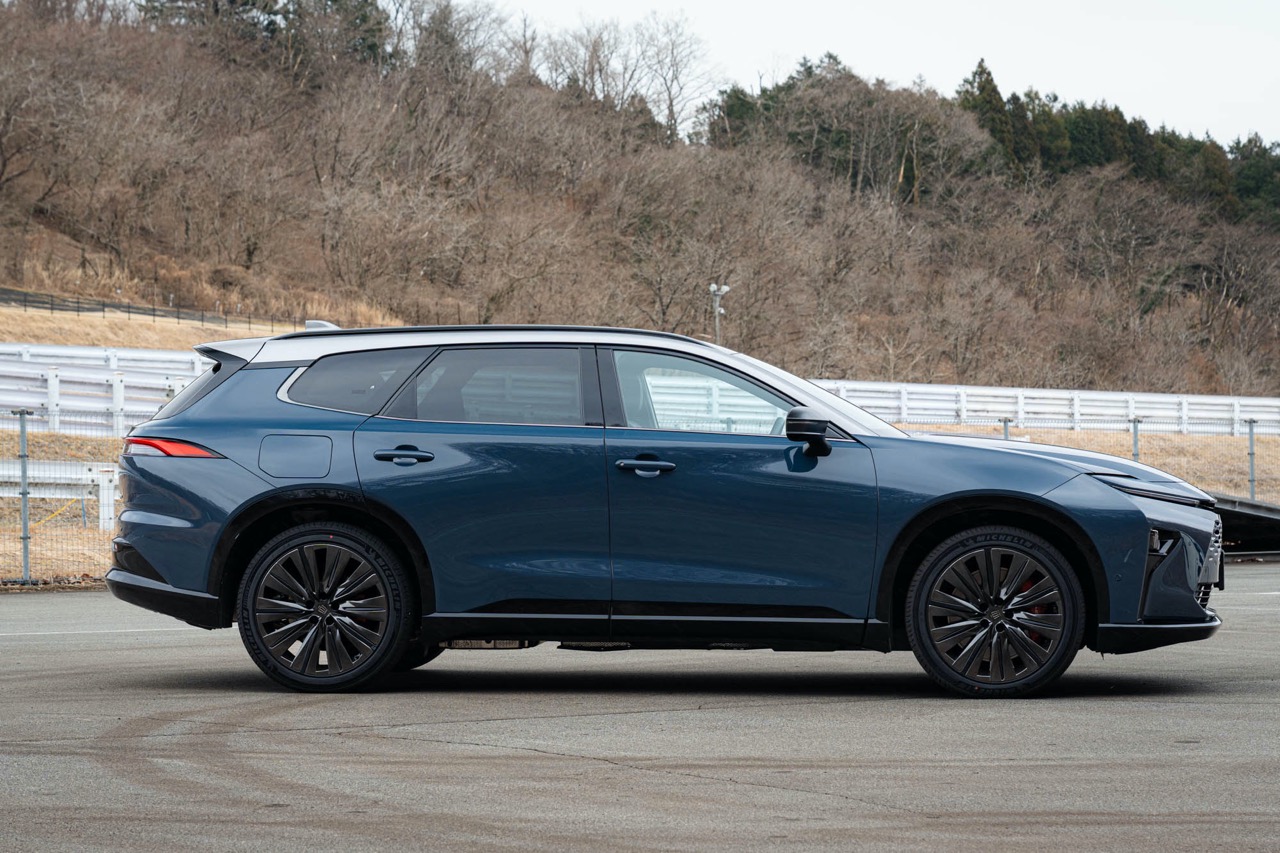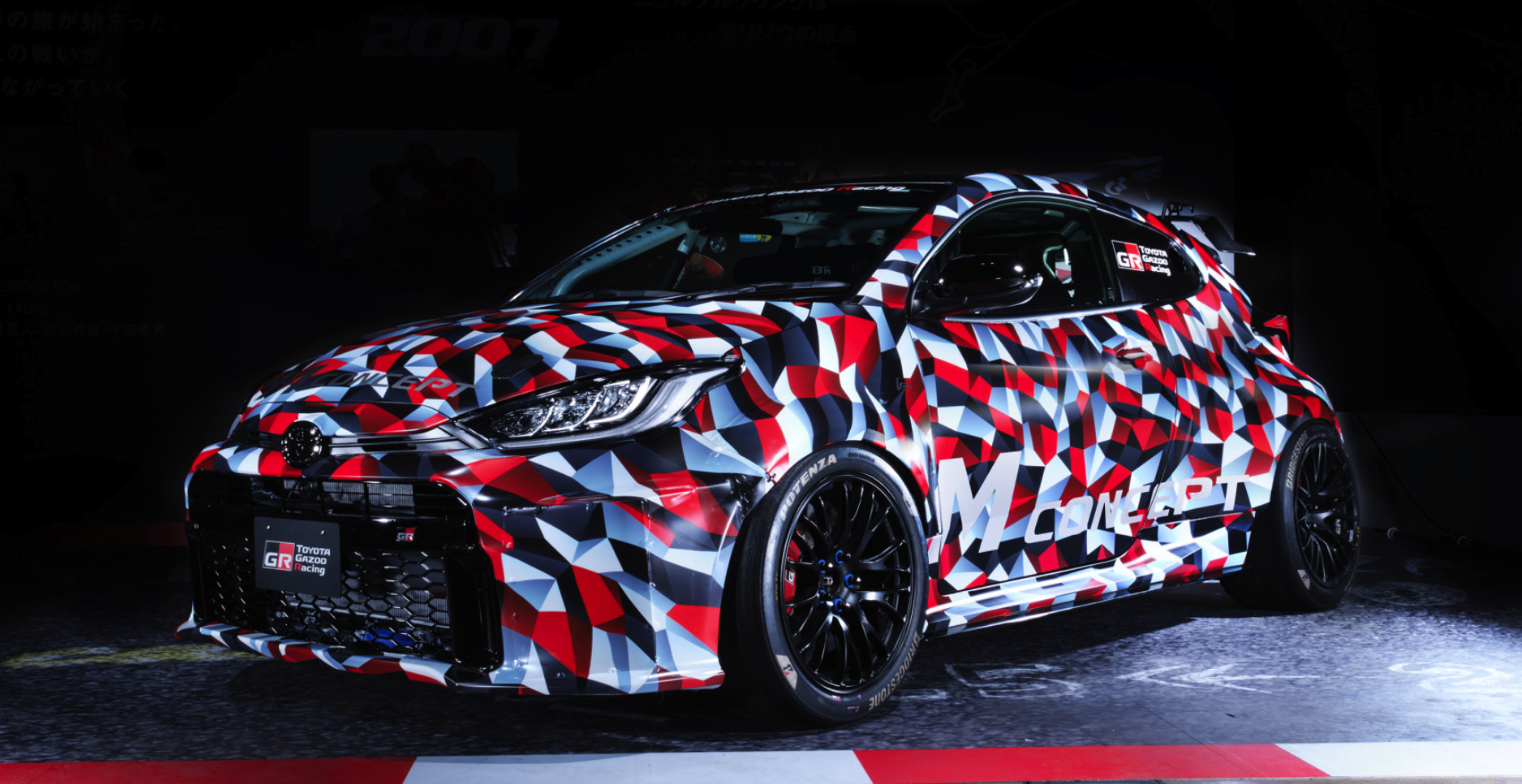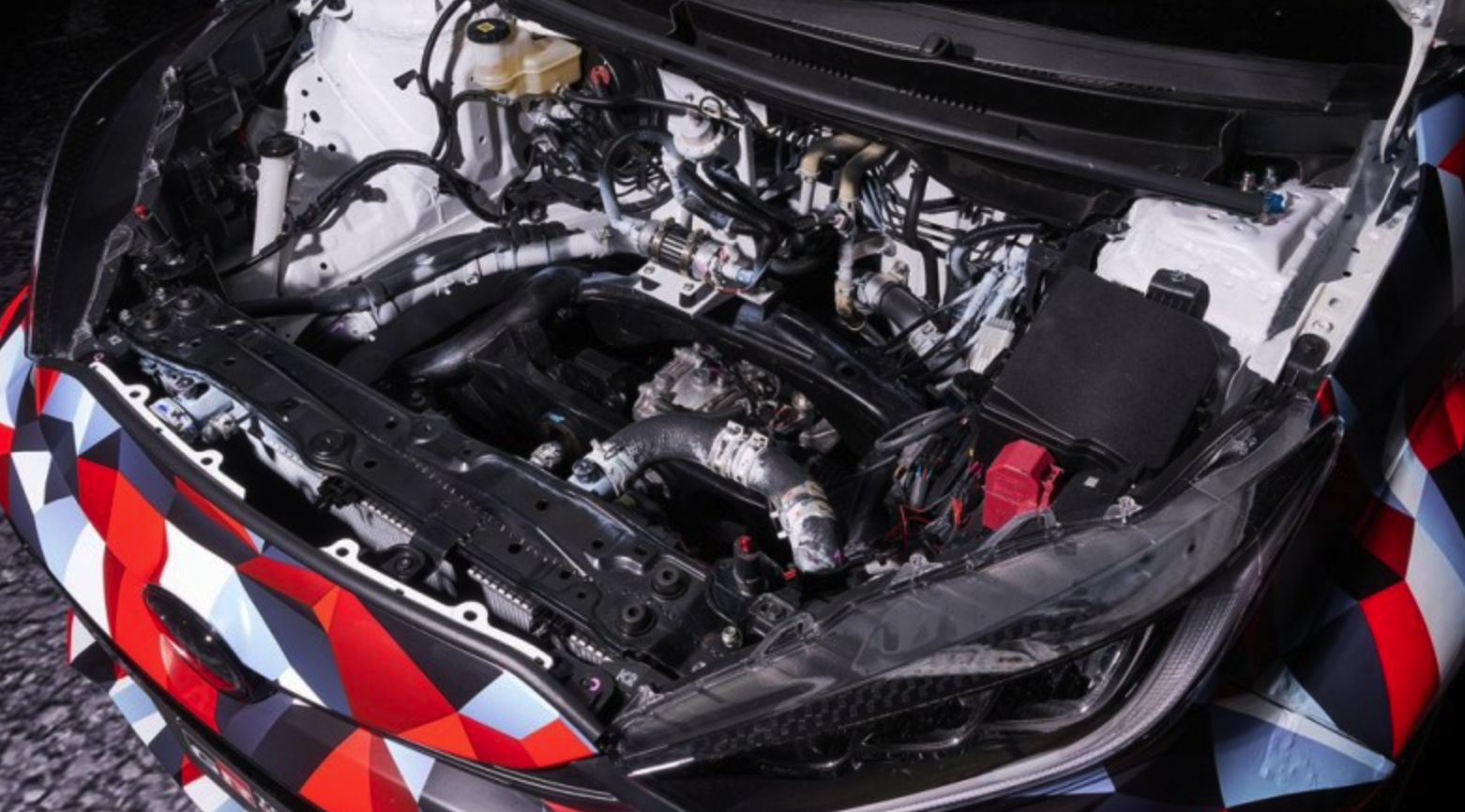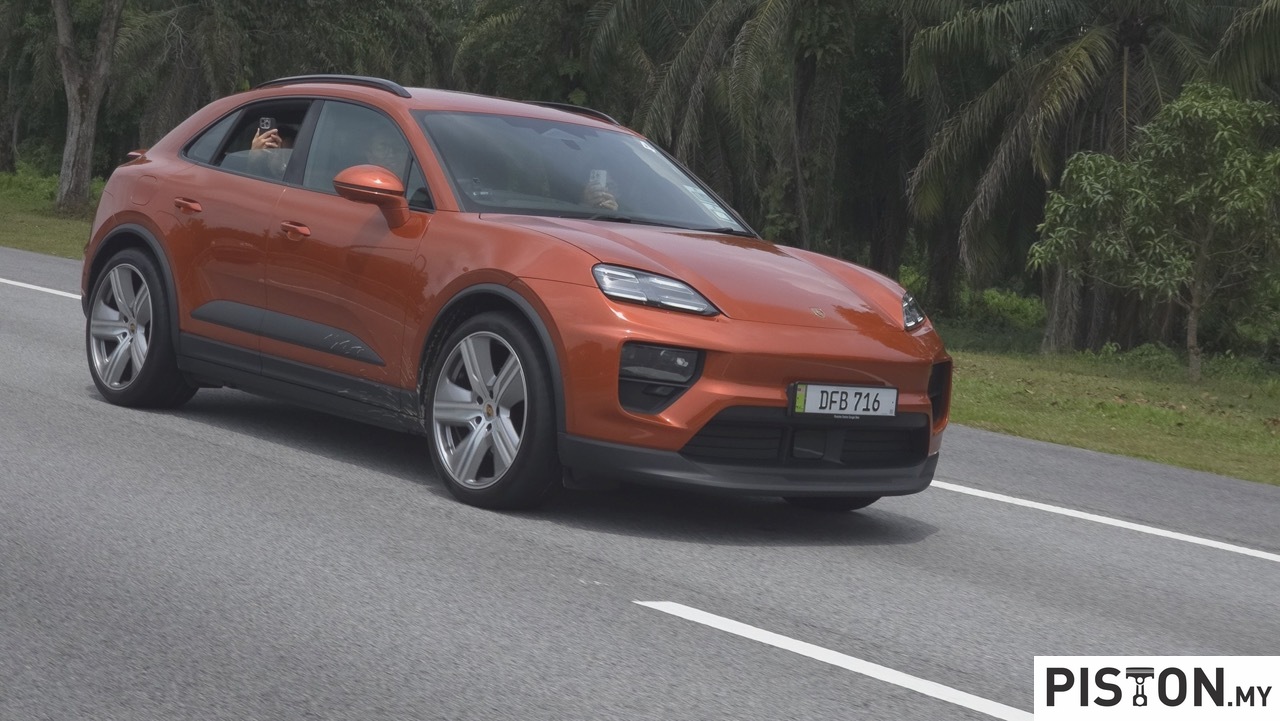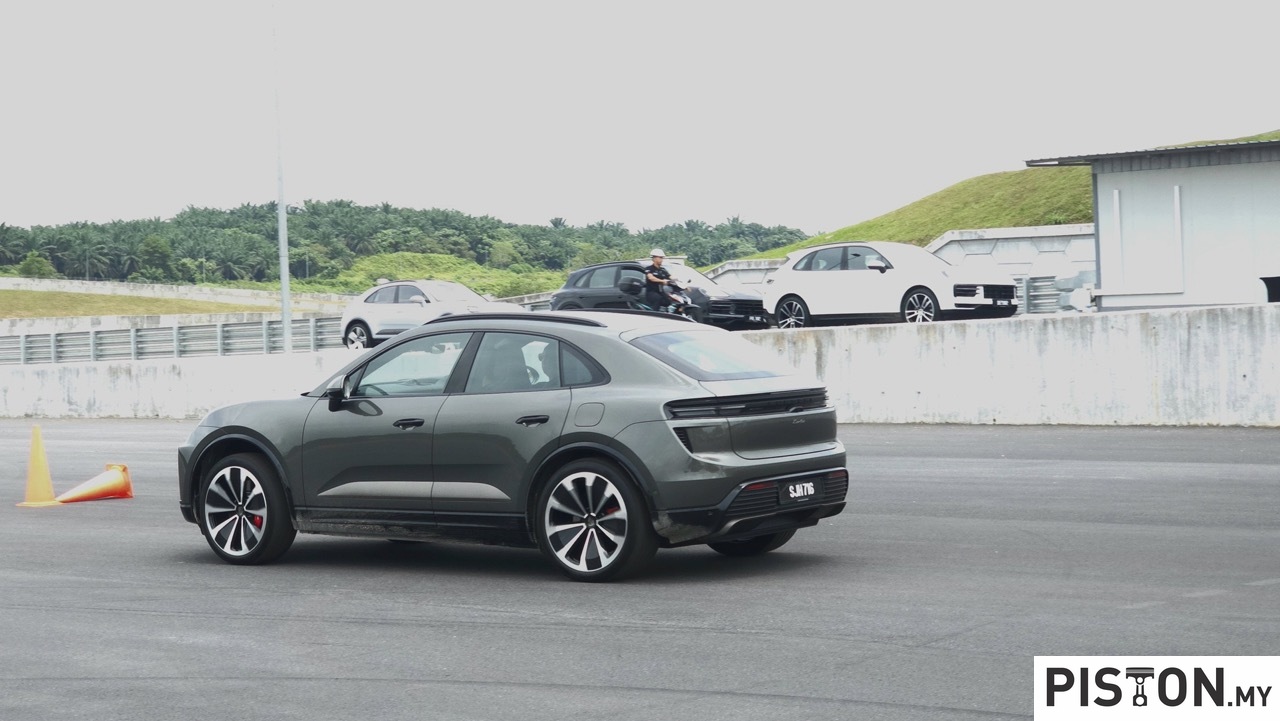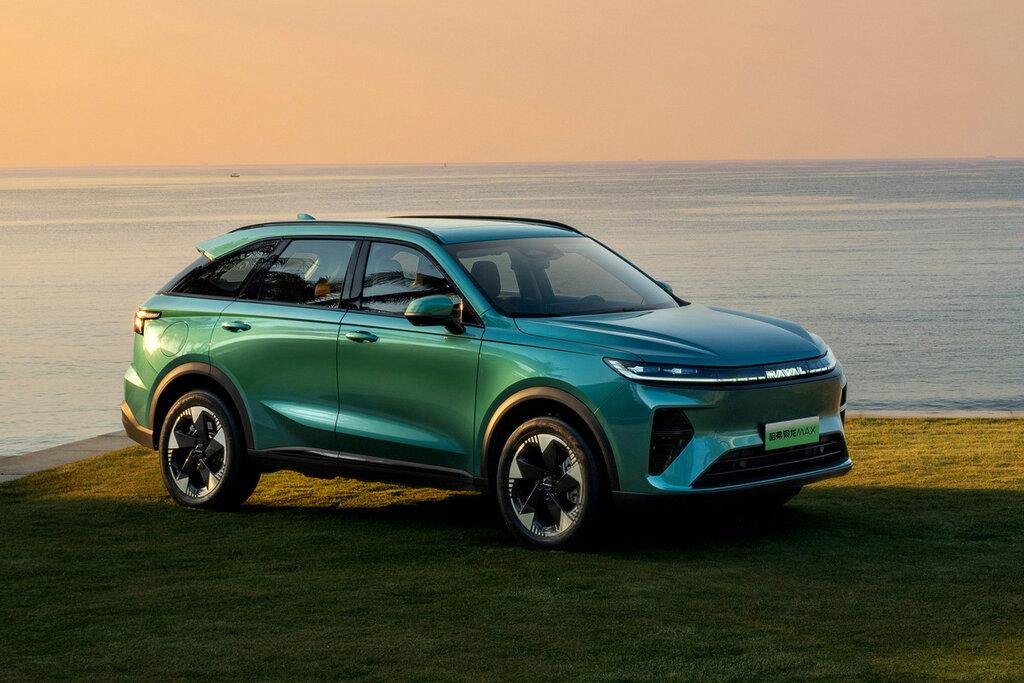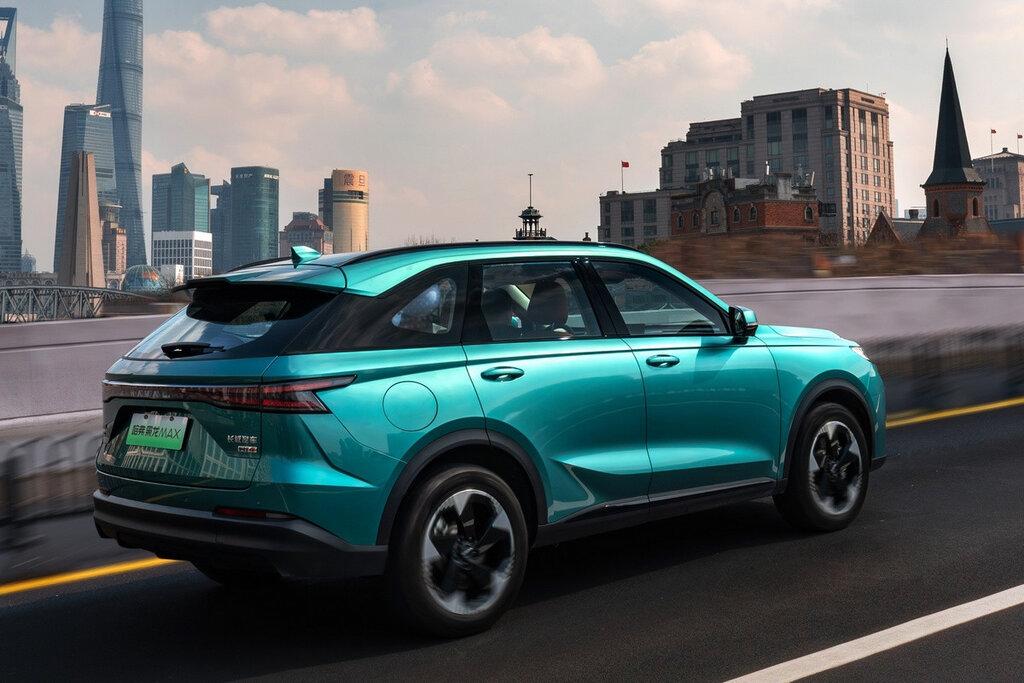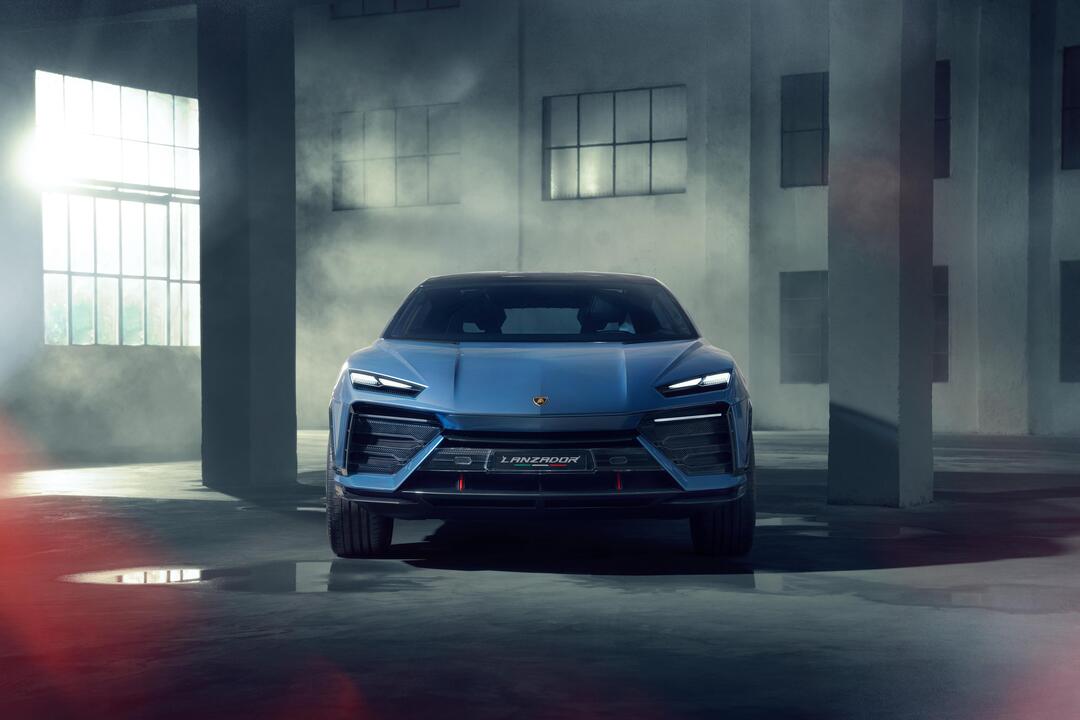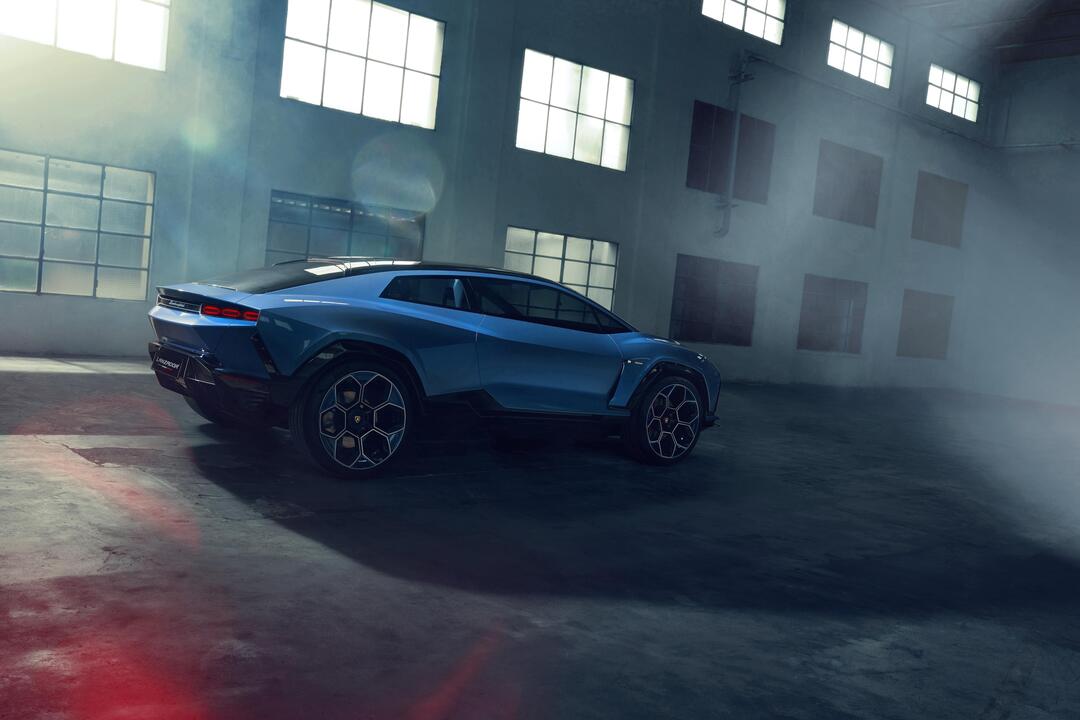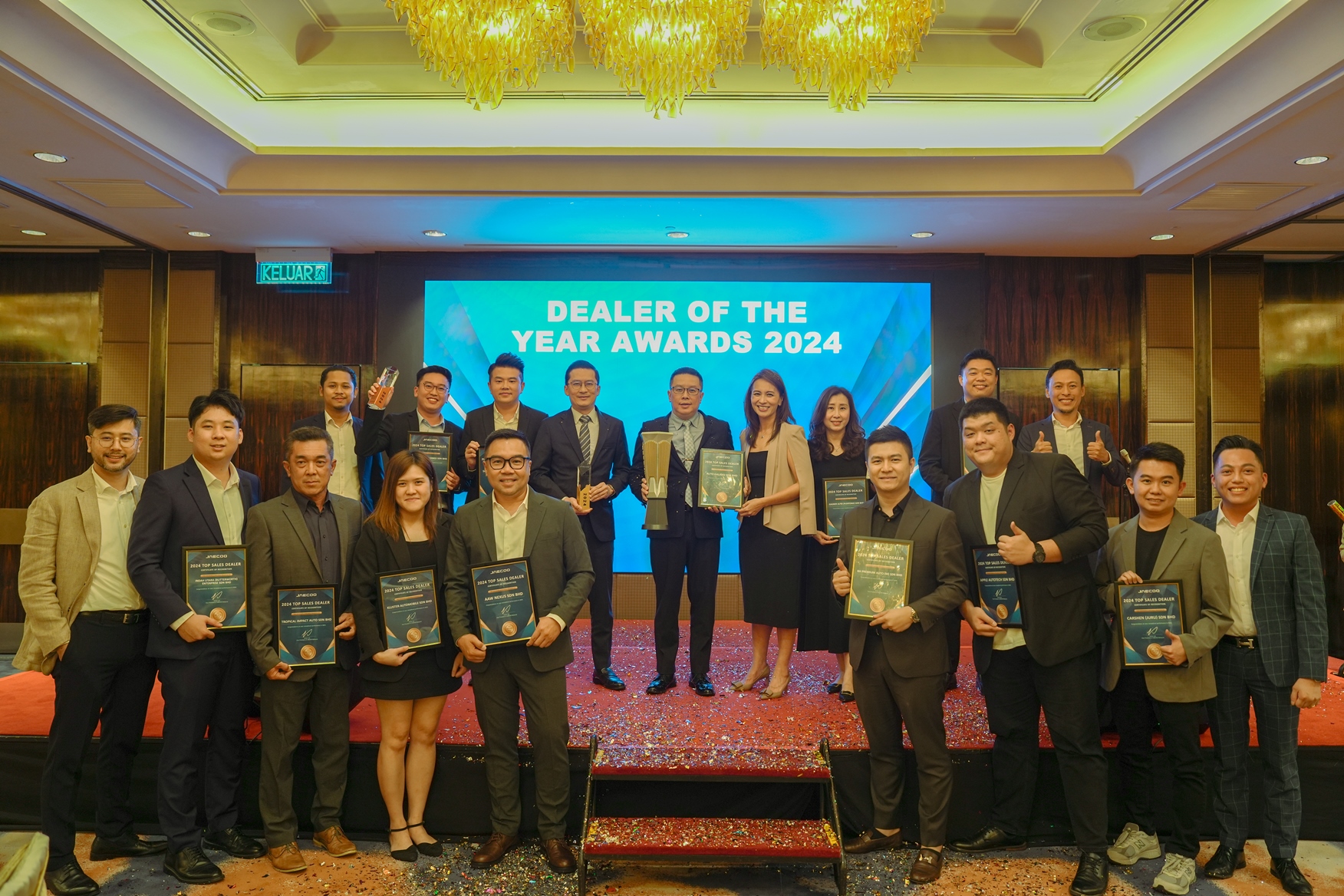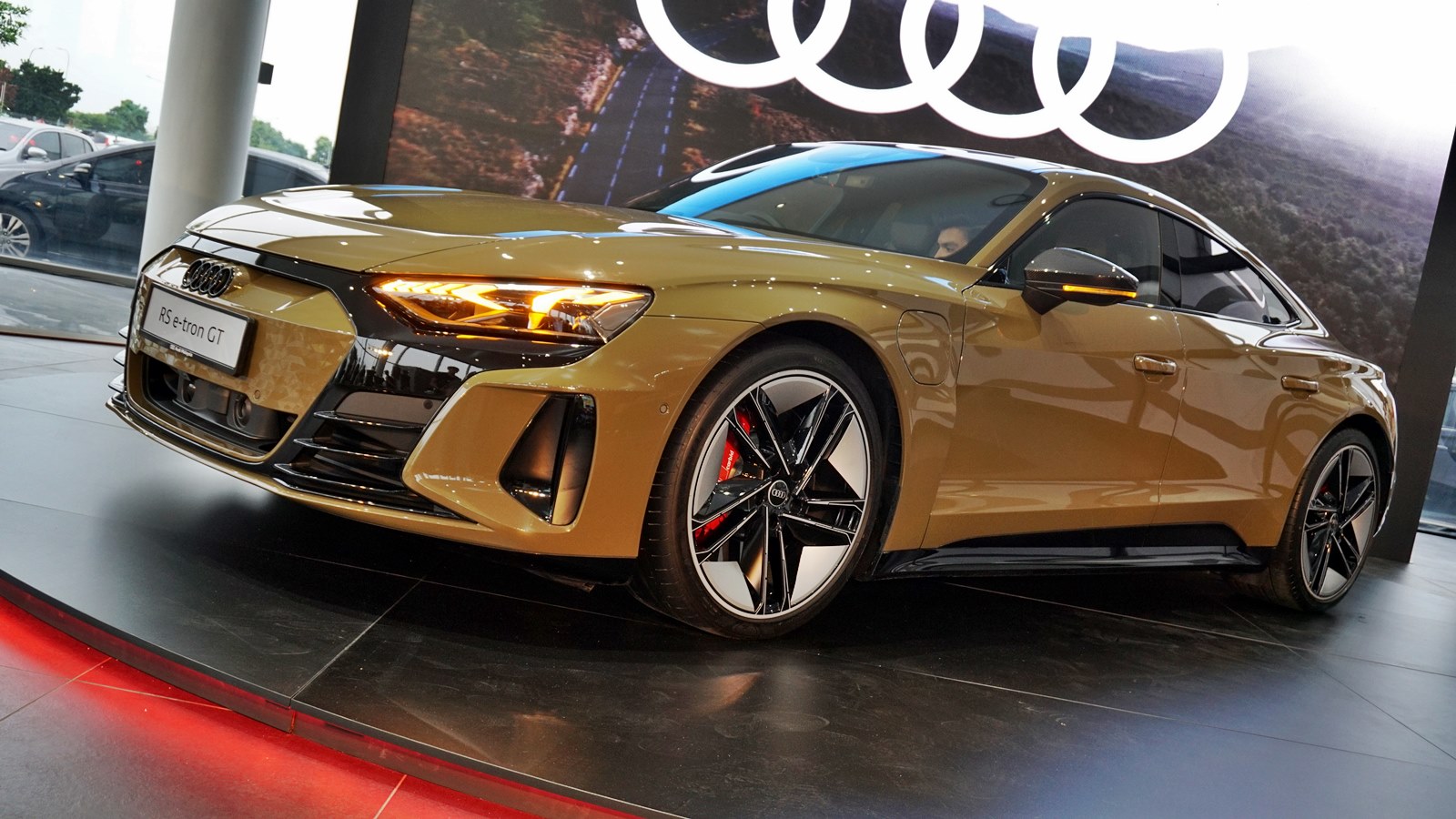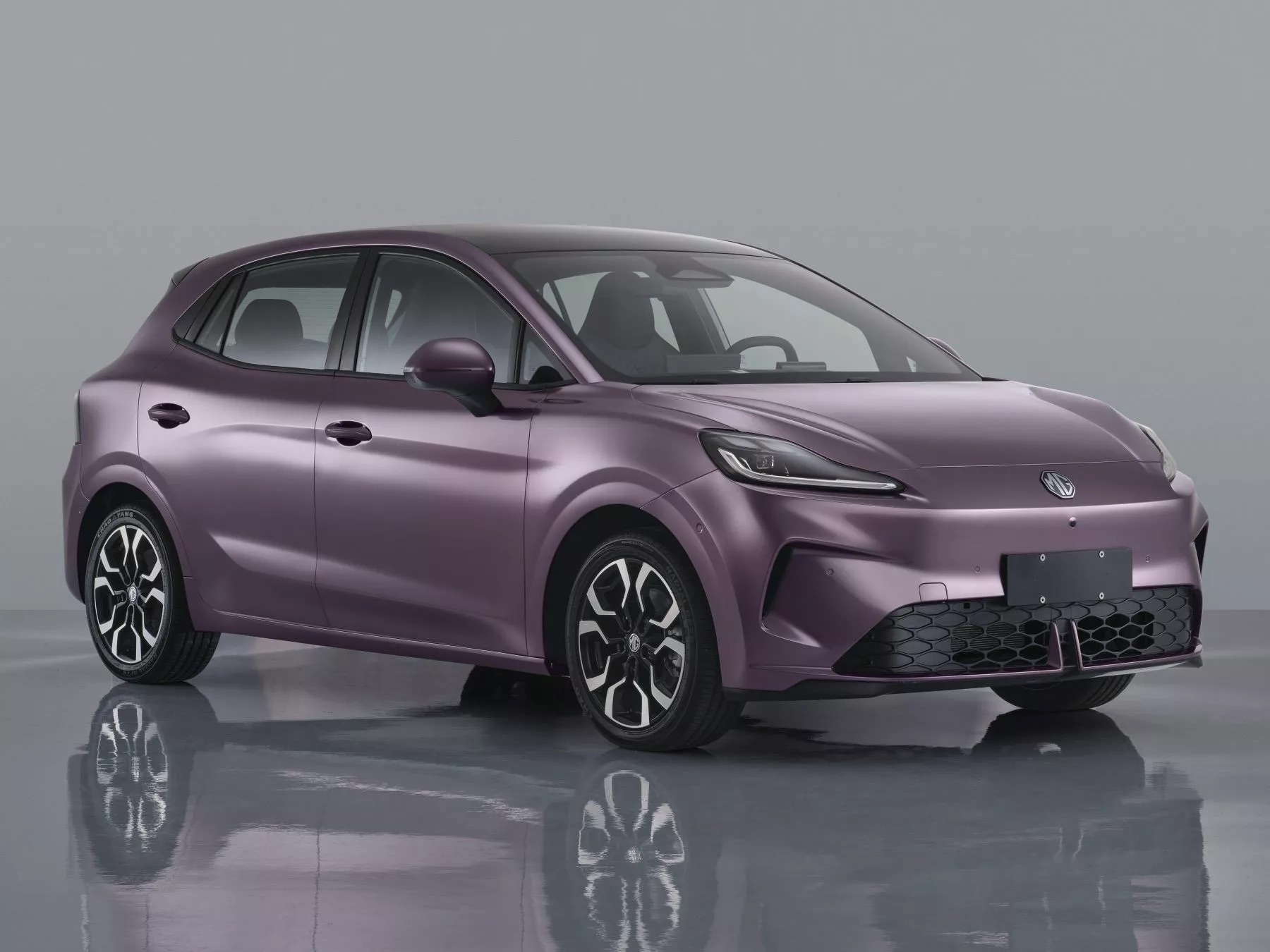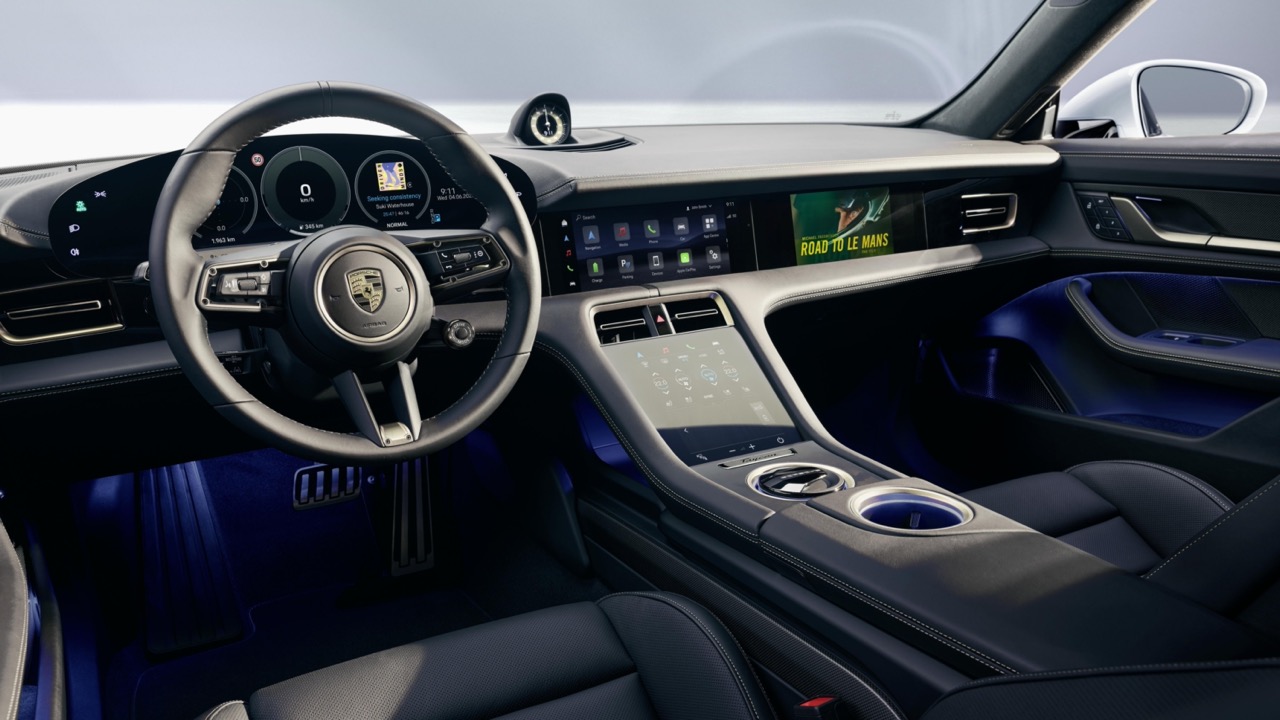Renault has officially introduced the Renault 5 Turbo 3E, an electrified homage to the legendary Renault 5 Turbo and Turbo 2. This high-performance model, developed under Alpine’s performance division, is a limited-production vehicle designed to offer modern electric power with the dynamic spirit of its iconic predecessors.
The Renault 5 Turbo 3E is built on a dedicated platform featuring a lightweight carbon structure, enhancing both performance and handling. With two rear-mounted electric motors generating a combined 540hp and 700Nm of torque, the vehicle delivers exceptional acceleration, capable of sprinting from 0 to 100km/h in just under 3.5 seconds. The car’s aggressive stance is emphasised by an ultra-wide body measuring 2.02 meters, significantly wider than its predecessors, and designed to improve aerodynamics and stability at high speeds.
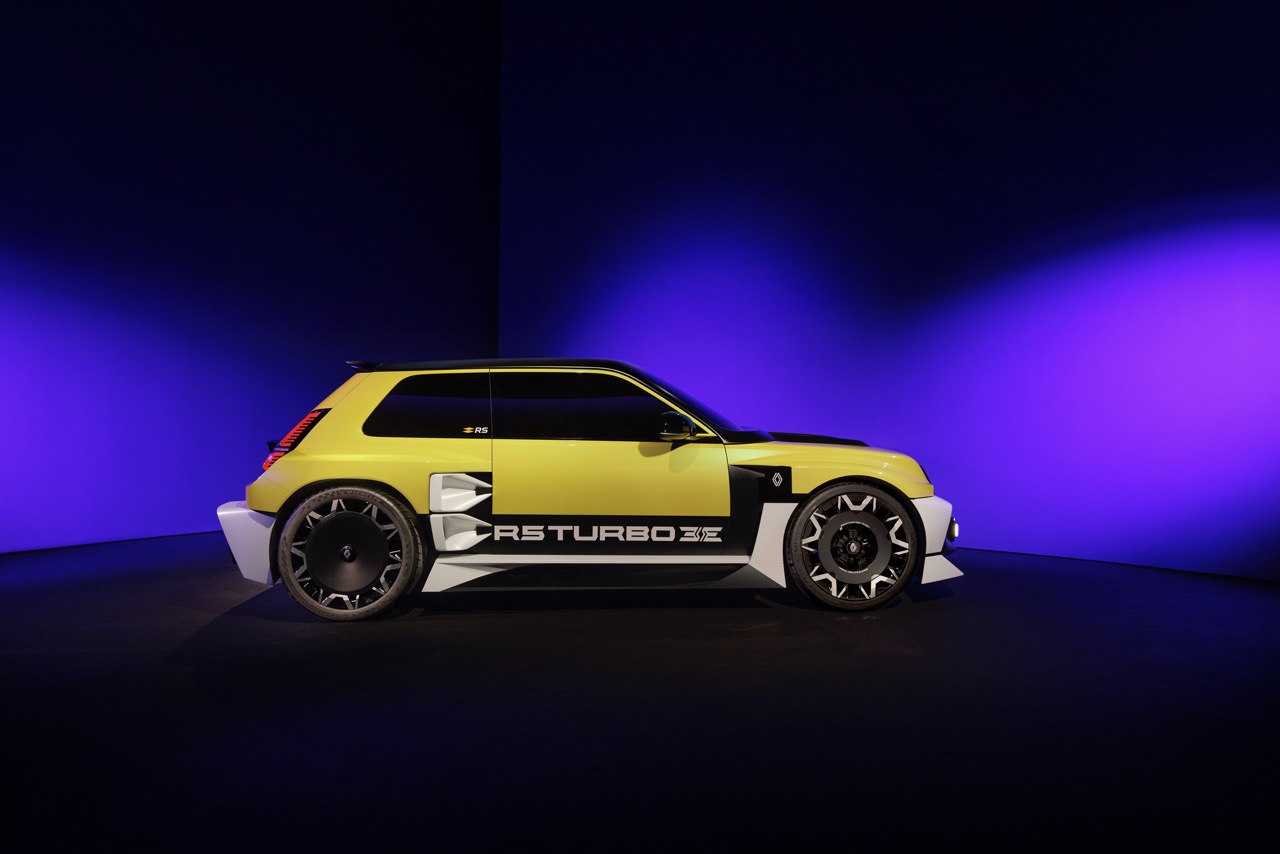
Powering the Renault 5 Turbo 3E is an 800V architecture that enables rapid recharging. The vehicle supports 350 kW fast charging, significantly reducing downtime between driving sessions. Renault has engineered the car with a focus on both track capability and everyday usability, ensuring it meets the expectations of modern performance car enthusiasts.
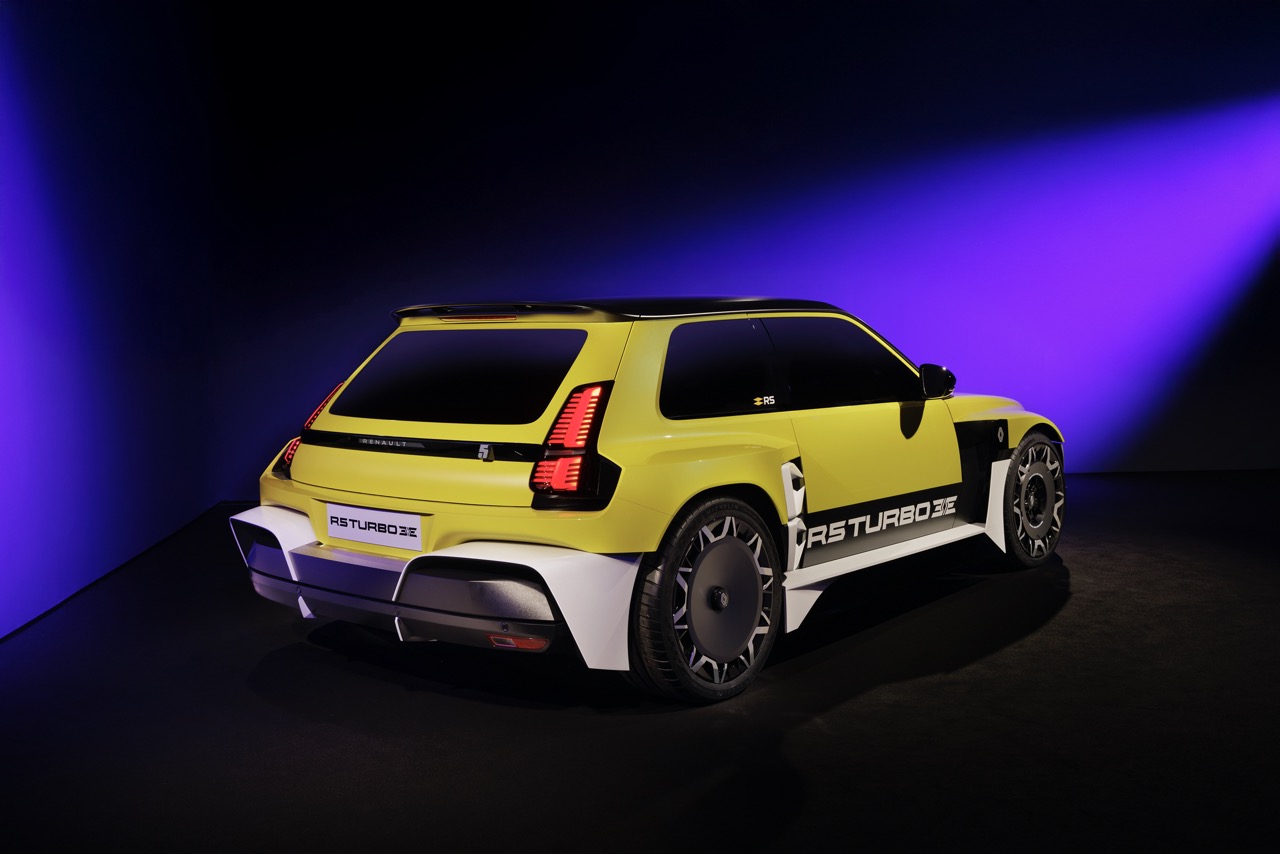
Visually, the Renault 5 Turbo 3E stays true to its heritage while incorporating contemporary design elements. The retro-futuristic aesthetic is evident in the vehicle’s bold lines, flared wheel arches, and an imposing rear spoiler, all of which contribute to its striking appearance. The interior is equally performance-oriented, featuring a racing-inspired cockpit with digital displays and lightweight materials to maintain an optimal power-to-weight ratio.
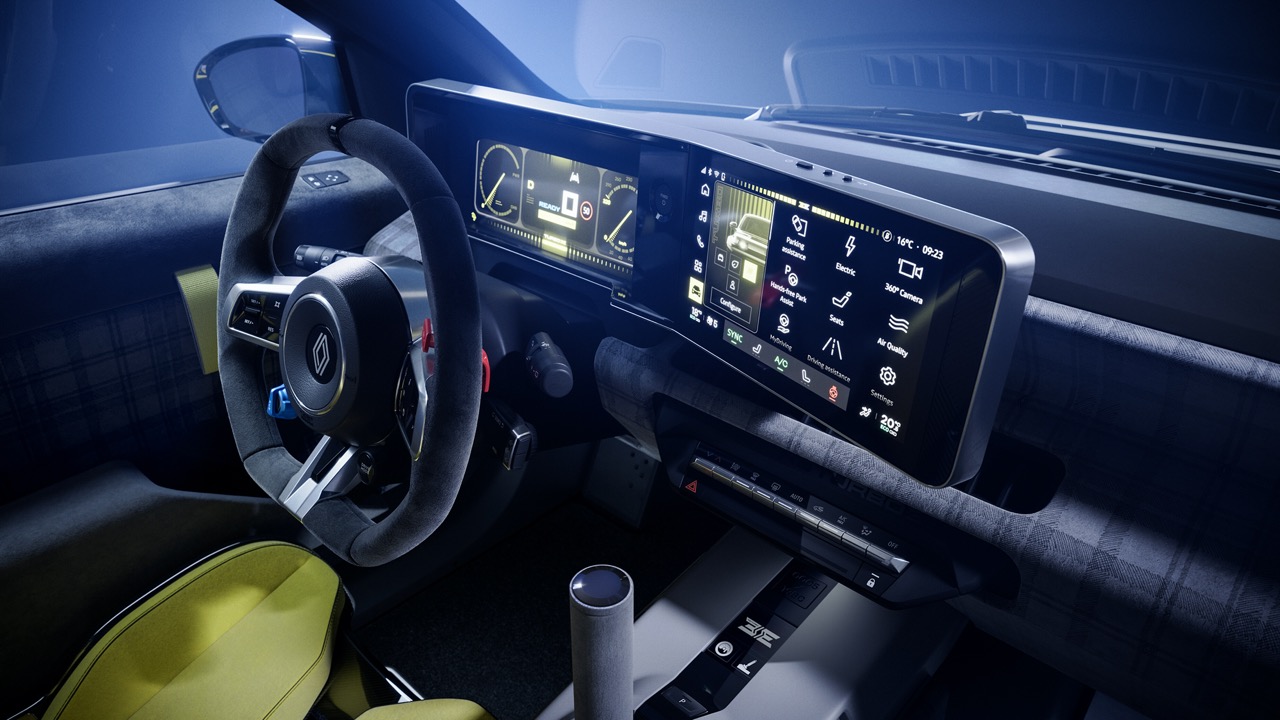
Renault plans to produce only 1,980 units of the Renault 5 Turbo 3E, a reference to the original Renault 5 Turbo’s debut in 1980. With its combination of electrified performance, striking design, and exclusivity, the model is expected to attract collectors and enthusiasts alike. Bookings for the car will open soon, and demand is anticipated to be high given its limited availability and performance credentials.
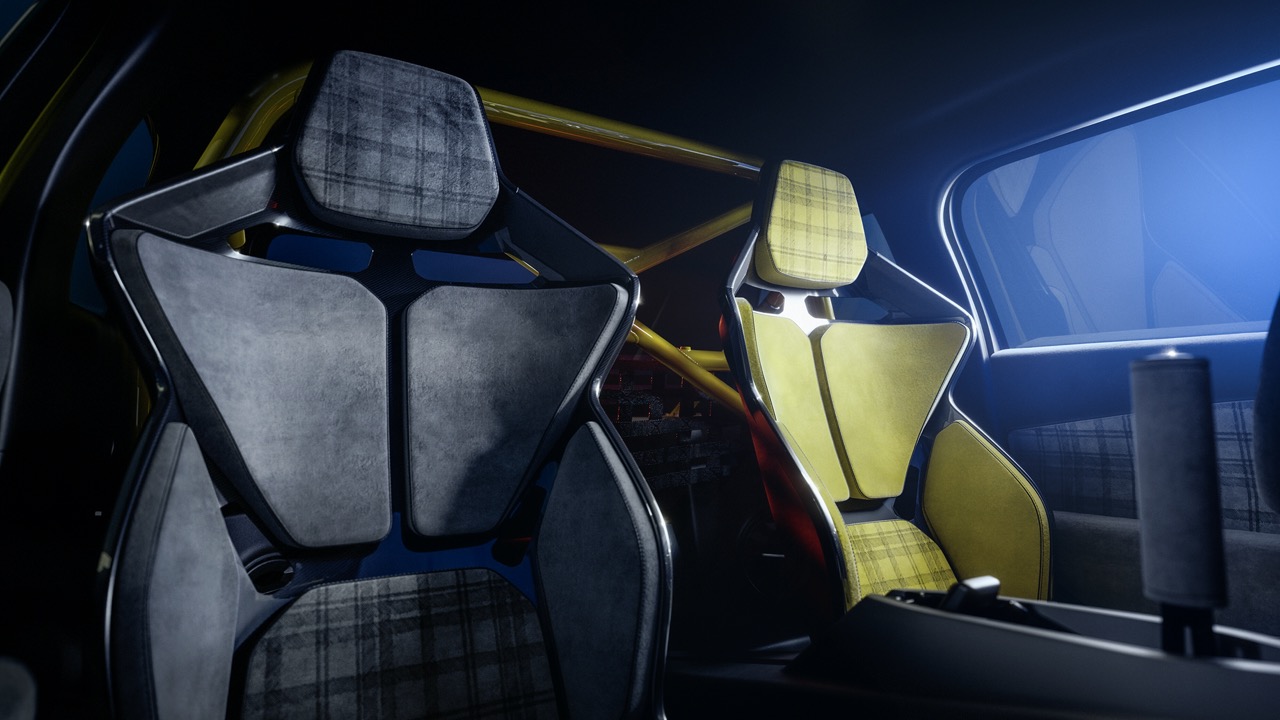
This launch marks Renault’s continued commitment to blending heritage with innovation, bringing back an icon in a form that aligns with the future of mobility while maintaining its high-performance DNA.




